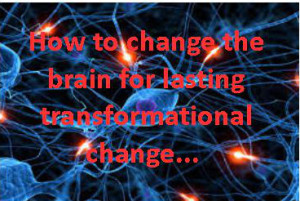While we develop in childhood we are learning about how we and the world work. We learn what’s appropriate and inappropriate, right and wrong, good and bad, what behavior does and doesn’t get our needs met.
Our emotional brain (lymbic) records these learning’s emotionally, in such a way that should a similar experience occur in the future we have the learning available to us in order to cope with it.
For example, if we are judged as ‘showing off’ in class and are ridiculed for it we may feel intense embarrassment. Through this experience we emotionally learn that being the ‘center of attention and loving it’ is wrong and it’s important to prevent ourselves from feeling this level of embarrassment again.
How our mind might ensure we avoid the embarrassment is to give us an anxious feeling when we go to read in class, or give a speech in work. The anxiety prevents us enjoying being the center of attention and ‘showing off’. We believe (emotionally) this will spare ourselves the intense embarrassment that we learned comes with ‘showing off’.
We don’t remember consciously coming up with ‘anxiety’ as a strategy to prevent ‘embarrassment’ and in later life the anxiety itself becomes the ‘symptom’ we wish to change.
Symptoms (panic attacks, nervousness, lack of confidence, overeating etc) are the developing brains solutions to early/original emotional problems.
Positive affirmation and insight (which lay down new neural networks) doesn’t access or easily change the original emotional learning.
Those early developmental emotional learning’s are built to last.
Example:
• If I don’t eat I’ll feel so frustrated and alone. Food is always there for me and makes me feel happy. So I’ll overeat (solution) to prevent me facing my frustration (original emotional learning).
• I have to play small and not succeed (solution) because if I do well I’ll make people unhappy and feel bad (original emotional learning).
• If I relax and enjoy flying then something bad might happen, so I have to be on guard for that (original emotional learning) and remain anxious (solution).
Emotionally intense learning’s are formed by and stored in the brain’s limbic (emotional) system, and experiential process (i.e we have to access and feel the original memory/emotion) is required to reach and access this emotional material directly. Non-experiential, conceptual insights and interpretations are, in themselves, ineffective for true accessing because they take place in a very different brain system, the neocortex, which cannot control, override or even access the limbic system’s networks of emotional reality.
When we lay down new learning’s that contradict the original learning those new learning’s are stored in different parts of the brain and compete with the old emotional learning’s. So sometimes we can feel comfortable presenting (as we are running the new neural networks) and sometimes we feel panicked (when the original emotional learning is triggered).
This gives rise to incremental change, sometime felt as ‘one step forward two back’.
This can be frustrating and confusing for people who don’t understand how they can still be dealing with recurrent issues or not seem to be able to make lasting change.
Transformational change is achieved when we access the original emotions and memories and decode/unlearn/reappraise them in such a way that we no longer believe (emotionally) what it is we learned e.g we no longer believe we are alone, not good enough, wrong, incapable and so on. This can only be done emotionally and is uncomfortable yet rewarding work. It is often best done with a trained therapist yet can also be done by oneself.
Once the original emotional learned experience(s) and feelings have been accessed and felt the implied learning can be made conscious (e.g I’m alone in life, I hurt people, I can’t be trusted, I’m not good enough) reassessed, released and updated new learning can be installed emotionally in those neurons.
In this way when you say something like ‘I’m a good person and it’s safe to enjoy being the center of attention’ it will both be rationally true and felt emotionally as true. The inner conflict will have been resolved and the symptom e.g anxiety can then automatically stop happening as there is no longer an emotional reason for it to operate.
Coherence therapy, EMDR, EFT, Hypnosis and NLP are all therapeutic techniques that can be employed to access and change original emotional learning’s.
To find out more call 01 207 9615 or email info@dublinmindtraining.com
